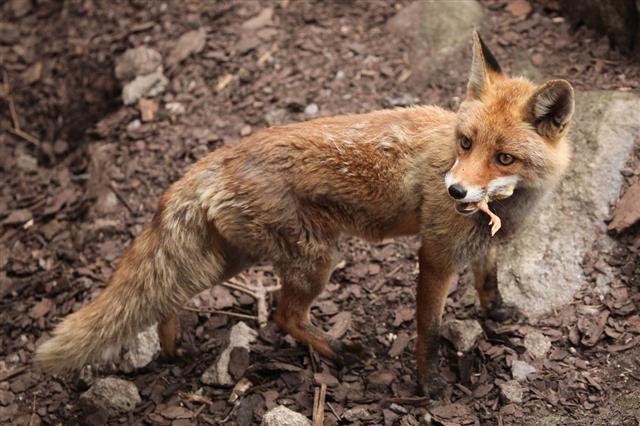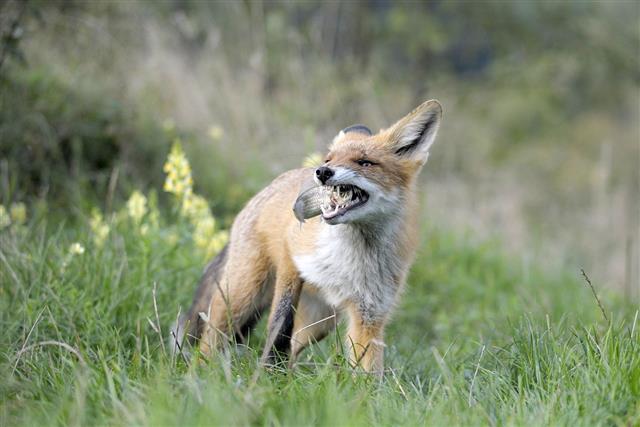
Foxes are known to be good hunters, but do you know that they can even scavenge human garbage for food? If they don’t find anything else? Well, there are lot more interesting facts about their diet composition. Take a look.
Foxes are carnivorous animals who belong to the Canidae family. They are usually identified by their long and narrow snout, and a bushy tail that often looks like a brush. TheVulpes genus is known as the true fox identification and there are about 12 species that belong to this genus. The most common among these species is the “red fox”.
Facts about Foxes
- Foxes are smaller than other members of the family Canidae, viz. wolves, jackals and domestic dogs.
- Male foxes (Reynards) weigh about 5.9 kg and female foxes (vixens) weigh up to 5.2 kg on an average.
- The physical characters that are common to all foxes are distinctive muzzle and a bushy tail. Other features vary according to their habitat.
- They are opportunistic feeders and live in small family groups. They hunt live prey by pouncing on it and killing it quickly.
Body Anomalies
Along with the basic characteristic which are common to all foxes, the fennec fox which lives in deserts has large ears and short fur, while the Arctic fox has tiny ears and thick fur.
Meal Preferences
Foxes are often considered as carnivores but their diverse choice of food makes them omnivores. They can ingest anything they find, right from a small insect to a large rabbit. It is their wide choice of food that makes them adaptable to any place and season. They depend largely on invertebrates for food and sometimes also consume grasses, berries and fruits. Their favorite fruits are apples, plums and blueberries.
Hunting and Food Habits
Foxes are intelligent hunters, their preys often get trapped by them very easily. They love to hunt alone but in winters they form groups for hunting. They are very active when it comes to hunting and generally hunt after dawn. Foxes are possessive regarding their food, it’s the vixen sharing food either with their cubs or dog foxes during courtship. And if by any chance they have more food, then they make sure to hide the food in the holes beneath the earth’s surface.
Arctic Fox Diet
Arctic species of fox eat fish, mollusks, small reptiles and at times, birds. They are scavengers; they can eat almost anything that is left over by other animals.
Desert Fox Diet
Desert dwellers such as the ‘fennec fox’ eat everything found in the desert. They eat rabbits, carrion, earthworms and even insects such as grasshoppers.
Daily Need
They are voracious eaters and need about half a kilogram of meat every day, and if they don’t find it, they compensate that with fruits like strawberries and wild fruits.
Favorite Food
Other staple foods in their diet can be pocket gophers, which these foxes love to hunt for. Red foxes, which are the most commonly found species in the world, use their famous ‘mousing leap’ to hunt rodents and mice. Hares and snakes are also one of their favorite foods as they enjoy feeding on them once in a while.
If Not Hunt Then Scavenge
Birds are not a favorite as they are difficult to hunt, but sometimes foxes do feast on their leftovers eaten by other animals.
It can, thus, be concluded that foxes, though being the smallest of the dog family are the smartest ones. Foxes love to eat anything and everything as they are always on the hunt for food. The eating habits of foxes give a clear view that foxes are not as wild as they seem to.
It can, thus, be concluded that foxes, though being the smallest of the dog family are the smartest ones. Foxes love to eat anything and everything as they are always on the hunt for food. The eating habits of foxes give a clear view that foxes are not as wild as they seem to.

















